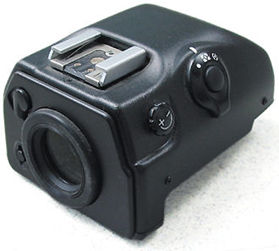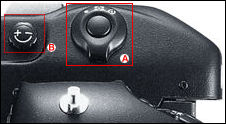Anyway as Nikon has often "forgotten" what people want "rather than what they expect" in the features of a top class professional SLR. They again did this with the design of the Nikon F5 body, when they integrated the power pack into the camera to make it one large bulky unit. When users reacted negatively to the Nikon F5 during its introduction back in 1996. They reverted back to a modular design with the option for the user to decide on how the camera could be "tailored" for a specific assignment. Well it took Nikon users eight long years to see if the Nikon F6 would revert back a modular design that was similar to that of the Nikon F4 released in 1988.
|
|
Entrance. ground floor at Petronas Twin Towers. Kuala Lumpur. |
|---|
 |
Note: his image is almost scaled to an actual dimension of the Nikon F5 on the computer screen (1024 x 768). A Nikon F5 A with MF-28 Multi-Control Function back attached . Inserted image is Kenny Goh's daughter. |
Now Nikon has decided to do away with their exclusive interchangeable prism option on the F6. I think this may be due to the increased cost of manufacturing such a complex item. I wonder if we may see it return someday, if and when they decide to release an F7. It also makes me wonder if these guys in the board room are just pure businessmen or a group of marketing people who rarely shoot photographs at all....
 |
 |
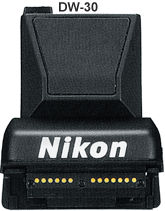 |
|
Just like the Nikon F4, Nikon has designed a special viewfinder (DP-30) which actually is the standard unit used on the Nikon F5. The metered prism houses a metering cell embodied within to provide the exposure guide. The standard Multi-Meter Finder, is interchangeable with three other optional viewfinders: Nikon AE Action Finder DA-30, 6X High-Magnification Finder DW-31 and Waist-Level Finder DW-30 - all of which offer virtually 100% in frame coverage.
|
|
 |
The Multi-Meter Finder DP-30 is a High-eyepoint type, Matrix, centre-weighted integral & spot metering enabled. Made of top grade, corrosive resistant Titanium metal at exterior provides as standard prism for the Nikon F5. It is a fixed eye level pentaprism and employs a High-eyepoint design; which mainly contributes to its smaller viewfinder image at 0.75X magnification with 50mm lens set at infinity. |
|---|
The DP-30 also Incorporates a built-in diopter adjustment knob (-3 to +1 diopters), a finder release button and an eyepiece shutter at the rear section near the eyepiece. It also has an ISO-standard accessory shoe that sits on top along with a metering system selector at the side of the prism. Many of these features are similar to the Nikon F4's standard Multi-Meters Prism DP-20.
|
|
The DP-30 Multl-Meter Prism, in a less significant way is also one of the highlights of the Nikon F5. The tough Titanium construction protects critically important components inside. It houses the 3D-Color RGB Sensor and I think another pair of sensors positioned near the eyepiece that are for handling multi-segment ambient light metering. On the top right hand side is the three metering systems selector for Matrix, center-weighed and spot metering (A). There is also smaller dial with + & - sign that is for the built-in Diopter adjustment for individual eyesight. |
|---|---|
|
|
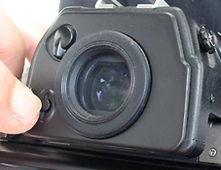 |
The eyepiece accepts a host of Nikon accessories (see below) add to the comfort of long viewing or picture composition. The lever at the top is for Eyepiece Shutter Blind - important when you are in unmanned situation or when the camera is tilted downwards with a strong light source behind that may affect exposure accuracy since the metering cells are so close to the eyepiece section. |
|---|---|---|
 |
Incidentally the active shutter blind is gray in color as opposed to bright Red used in the Nikon F4 DP-20. Such a shift in color choice was probably due to the additional inclusion of the color-sensitive RGB sensor that is positioned just slightly above the eye-piece. The button at the bottom left near the eyepiece is the Finder Release Button, which you press and pull to remove the viewfinder. Both the button and lever have been smartly protected by the contoured outlines and have been placed slightly inward from the outside of the housing. This is good because one of the main issues of the finder is the often broken eye-piece lever found on a few Nikon models.
|
|
The Finder release button is not the easiest push button in the world to operate. I think this to eliminate accidental release of the viewfinder. The Nikon F5 is very well designed against moisture penetration. Another thoughtful design feature is the double lock mechanism that provides a firm grip onto the railings to prevent the finder from slipping out. Anyway as one may not often change finders all of the above mentioned precautions are indeed beneficial and contribute to the durability and toughness of the F5. |
|---|---|
|
|
|
 |
NOTE: The special variant metered prism DP-30 designed specifically for the limited edition Nikon F5 50th Anniversary Model carries the classic look of an inscription used on the Nikon rangefinders of 50 years ago. It is also made of Titanium like the standard DP-30. Some users refer to it as DP-30a but officially it is still being referred to as a DP-30 as indicated at the bottom section of the finder. This can be considered a variant of the Standard DP-30 Finder but it is NOT available commercially. |
The Nikon F6 with its FIXED pentaprism - To many Nikon faithful it looks very uncustomary as compared to previous Nikon F-series bodies. It is either a love or hate feature, and is not commercially viable for Nikon to maintain this any further. So bye-bye for now- until Nikon wakes up again... |
| previous | NEXT | 1/2 AE Action Finder DA-30 High-eyepoint type, Waist Level Finder, 6X High Magnification Finder and System accessories
| Back | Main Index Page - Nikon F5 Professional SLR camera
The Camera - Background,
Issues & Summary
Basic
Features | Focusing | Metering Systems | Exposure Control | Reliability Issues | Nikkor lens Compatibility
Prisms/Finders - Index
page - 2 parts
Film Backs: Index
Page - 1 parts
Focusing Screens - Index
Page - 1 part
Flash System - Index
Page
- 3 parts
System Accessories: | Power Sources | Cases | Remote
Control | Miscellaneous
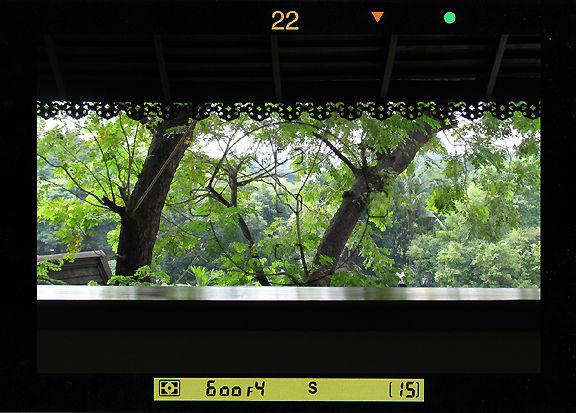 |
The famous Kandawghi Hotel, 2004, Yangoon, Myanmar (Burma).. |
|---|
Macro
Photography
- Related info on Micro-Nikkor lenses
Technical Specification for Nikon F5
Main
Reference Map
/ Nomenclature
Resource Centre:
Instruction Manuals
Nikon
F5 Camera Body
- 18
parts
MF-28
Multi-Function Back
HTML - 8
parts
PC
Links - Photo Secretary
- 2
parts
AF-TTL Speedlights:
SB-28 / SB28DX | SB29(s) info | SB30 | SB50DX | SB80DX | SB600 info | SB800
Variants: F5 50th Anniversary Model | Nikon/Kodak DCS-620 | DCS-720 Digital Still SLR camera | NASA-modified Nikon F5
| Nikon F | Nikon F2 | Nikon F3 | Nikon F4 | Nikon F5 | Nikon F6 | Nikkormat / Nikomat | Nikon FM | Nikon FE/ FA | Nikon EM/FG/FG20 | Nikon Digital SLRs | Nikon - Other models |
The Eyes of Nikon:-
Nikon Auto Focus Nikkor lenses:- Main
Index Page
Nikon Manual Focus Nikkor lenses:- Fisheye-Nikkor Lenses - Circular | Full Frame |
Ultrawides Lenses - 13mm15mm18mm20mm | Wideangle Lenses - 24mm28mm35mm | Standard Lenses - 45mm 50mm 58mm | Telephoto
Lenses - 85mm105mm135mm180mm & 200mm | Super-Telephoto Lenses - 300mm 400mm 500mm 600mm 800mm 1200mm |
 Index Page |
Special
Application lenses: Micro-Nikkor Lenses - 50mm~55mm -60mm 85mm -105mm 200mm Micro-Zoom 70-180mm Perspective Control (PC) - 28mm 35mm PC-Micro 85mm Dedicated Lenses for Nikon F3AF: AF 80mm f/2.8 | AF 200mm f/3.5 EDIF Depth of Field Control (DC): 105mm 135mm Medical Nikkor: 120mm 200mm Reflex-Nikkor Lenses - 500mm 1000mm 2000mm Others: Noct Nikkor | OP-Nikkor | UV Nikkor 55mm 105mm | Focusing Units | Bellows-Nikkor 105mm 135mm Nikon Series E Lenses: 28mm35mm50mm100mm135mm | E-Series Zoom lenses: 36~72mm75~150mm70~210mm |
MF Zoom-Nikkor Lenses: 25~50mm | 28~45mm | 28~50mm | 28~85mm | 35~70mm | 36~72mm E | 35~85mm | 35~105mm | 35~135mm | 35~200mm | 43~86mm | 50~135mm | 50~300mm | 70~210mm E | 75~150mm E | 80~200mm | 85~250mm | 100~300mm | 180~600mm | 200~400mm | 200~600mm | 360~1200mm | 1200~1700mm
Tele-Converters: TC-1 | TC-2 | TC-200 | TC-201 | TC-300 | TC-301 | TC-14 | TC-14A | TC-14B | TC-14C | TC-14E | TC-16 | TC-16A | TC-20E
Recommended links to understand more technical details
related to the Nikkor F-mount and production Serial Number:
http://rick_oleson.tripod.com/index-153.html by: my
friend, Rick Oleson
http://www.zi.ku.dk/personal/lhhansen/photo/fmount.htm by: Hansen,
Lars Holst
http://www.mir.com.my/rb/photography/hardwares/nikonfmount/lens2.htm
http://www.photosynthesis.co.nz/nikon/serialno.html
| Back | to Pictorial History of Nikon SLR / rangefinders / Nikonos / digital cameras.
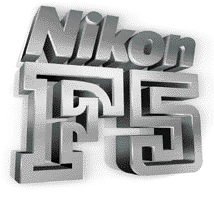 |
| Message Board | for Nikon F5 Series SLR model(s) | |
About this photographic site.
HOME - Photography in Malaysia |
![]()
A resource dedicated to my kids, Alvin Foo & Esther Foo- one day,
BOTH might need to use all these information for his/her Nikon F5A camera.
Volunteered Maintainer(s) for the Nikon F5 Message Board: Tony Davies-Patrick, UK; Rick Oleson, US; Koh Kho King, Malaysia.
Credit: Mr. Chuck Hester, US for his text re-editing skill for this site; Our staff, HowKiat® who created the 3D-Nikon F5 logo. Mr. Lew Chee Wai of YL camera for lending his F5 for me to take some shots appeared in this site. All those nice folks who have contributed their images, in particular Mr. Mike Long, Edwin leong, Palmi Einarsson, Sergio Pessolano, Fred Kamphues, Harry Eggens, Curtis Forrester, Nick (Natures Moments), Sandra Bartocha; fellow countrymen, Vincent Thian, Koh Kho King, Philip Chong, CY Leow etc. and contributions from a few nice folks from Photo Malaysia Forum. Disclaimers & acknowledgments: Certain content and images appeared in this site were either scanned from official marketing leaflets, brochures published by Nikon and/or contribution from surfers who claimed originality of their own work for public publishing in this website, where majority of the extracted information are used basing on educational merits. The creator of this site will not be responsible for any discrepancies that may arise from any possible dispute except rectifying them after verification from respective source. Neither Nikon or its associates has granted any permission(s) in using their public information nor has any interest in the creation of this site. "Nikon", "Nikkormat", "Nippon Kokagu KK" "Silent Wave", "Focus Tracking Lock-on", "Nikkor" & other applicable technical/business terms are registered trade name(s) of Nikon Corporation Inc., Japan. Site made with an Apple G5 IMac.



